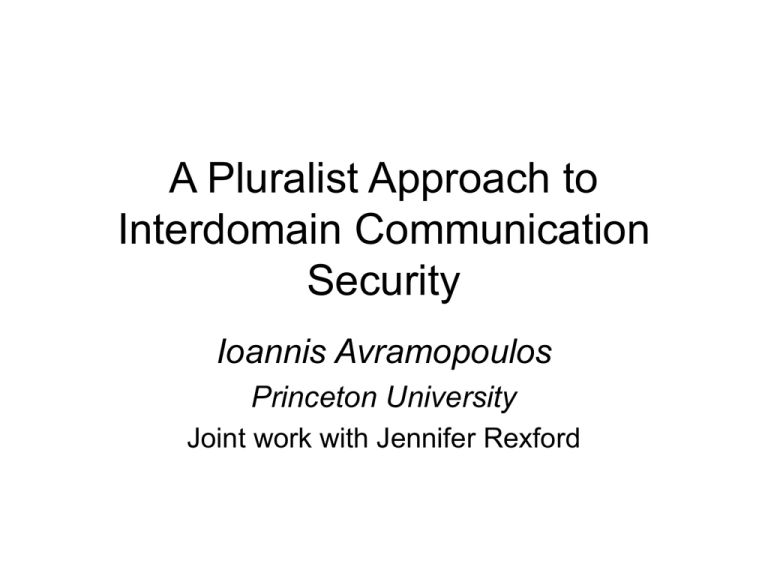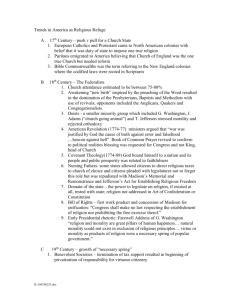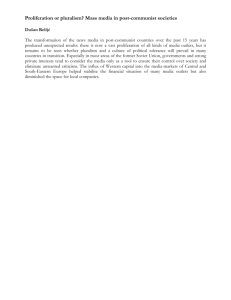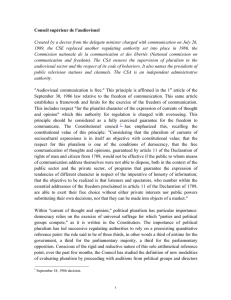A Pluralist Approach to Interdomain Communication Security Ioannis Avramopoulos
advertisement

A Pluralist Approach to Interdomain Communication Security Ioannis Avramopoulos Princeton University Joint work with Jennifer Rexford Economics & the Internet Inertness • Internet infrastructure is insecure • Despite the obvious threat, countermeasures are not being deployed – E.g., Secure-BGP • We argue that the reason is mainly economic • Autonomous systems (ASes) in commercial Internet are independent, rational, and pay-off maximizing entities Overview • Economic Case for Pluralism • Architectural Framework for Pluralism • Example of Using the Architectural Framework Background: Economics of Groups and Goods • Good: Secure communication between domains – Goods are confidentiality, integrity, and availability • Producing such goods requires action in groups – Group members are ASes • Goods can be – purely public (e.g., public television broadcasting) – purely private (e.g., recorded music sold in stores) – impurely public (e.g., cable television broadcasting) • Type of good can be engineered Background: Routing Protocols The Case for Pluralism: Purism is not Economically Viable • Purism: Ubiquitous deployment of a secure routing protocol • Purism treats secure interdomain communication as a pure public good – Therefore, purism is not economically viable The Case for Pluralism: Smaller Groups are More Effective • Olson classifies interaction among group members in three categories: – Large group; good will not be provided unless there is coercion – Small group; good may be provided by unilateral action – Medium group; good may be provided by strategic interaction The Case for Pluralism: Custom Security Solutions Per Group • Many options (mechanisms) to improve communication security – E.g., confidentiality can be protected by a secure routing protocol or encryption ciphers • No single mechanism can address the full gamut of threats – E.g., during a DoS attack you prefer unreachability • Network architecture should support the graceful coexistence of different mechanisms SBone Architectural Framework for Pluralism • Objective: support the formation of groups of any size---irrespective of IP connectivity of group members---without compromising security Formation of Arbitrary Groups Irrespective of IP Connectivity island Archipelago Threat Model • DoS attacks – against targets inside the overlay – against virtual links • Routing-protocol attacks – to intercept cross-island traffic • Data-plane attacks – to manipulate cross-island traffic Secure Virtual Link: Surelink • Connects a relay point in one island to a relay point in another forming an IP tunnel • Surelinks enhance the service model of a vanilla IP tunnel with – an encryption cipher to protect confidentiality – an authentication cipher to protect integrity and enforce access control – secure availability monitoring capability Secure Virtual Topology • Collection of multiple surelinks giving control of the underlying paths traffic takes • Path control can be leveraged to – proactively prevent routing attacks – proactively bypass untrusted non-participants – proactively spread traffic over multiple paths – reactively reroute traffic to alternate paths Example of Archipelago • Backbone-provider trusted VPN – Example of revenue-generating service based on coalitions among providers Example of Archipelago Australian branch surelinks Telstra AT&T US branch Example of Archipelago • Backbone-provider trusted VPN – Example of revenue-generating service based on coalitions among providers • Coalition-based trusted VPNs can serve multinational customers without additional investment on infrastructure Conclusion • Purism is not economically viable • Deployment of communication security mechanism should be based on pluralism; – I.e., the formation of variable-sized groups deploying mechanism customized to group-specific needs • Proposed an architectural framework to support pluralism that is backward compatible with existing infrastructure Thank you! Questions






